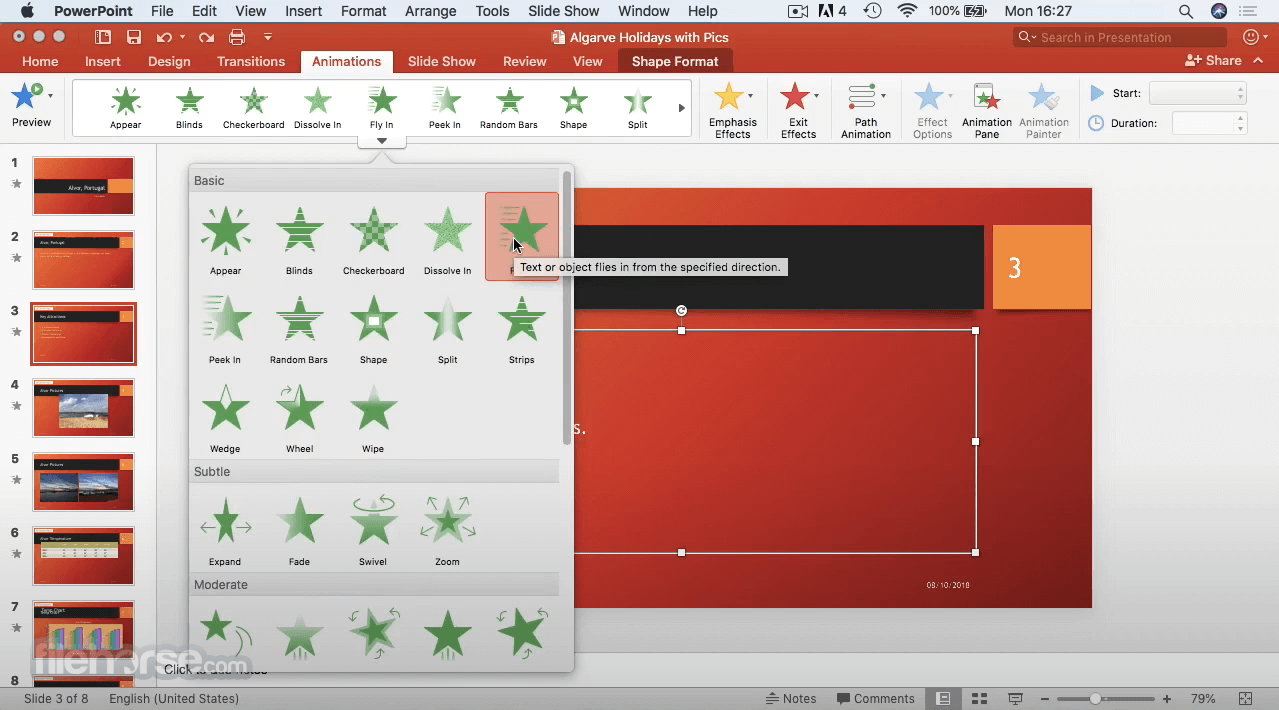



Although most toolbar icons have been relocated onto one of the ribbon tabs (and also have corresponding menu commands), you can no longer create a customized set of icons for your most common tasks.Ī new sidebar (much like Keynote’s Inspector) appears on the right side of the window when you invoke certain features, such as the Animation pane (which lists all the animations on your slide), the Format Pane (for editing the attributes of shapes, graphics, and other objects-including such previously hard-to-reach settings such as 3D Format and 3D Rotation), and Comments. The entire toolbar is gone, with only four vestigial icons (for File, Save, Undo, and Repeat) next to the Close, Minimize, and Zoom controls. The erstwhile Themes tab is now called Design Tables, Charts, and SmartArt (among other features) have been subsumed under a new Insert tab, and a number of tabs (such as Picture Format and Table Design) appear only when the appropriate object type is selected.Įach built-in theme has several variants if you want even more control, choose your own color palette, font, or background. Almost every ribbon control is still there, but many have been moved, renamed, and given new icons. If you knew where everything was in PowerPoint 2011, prepare for a bit of relearning. The most obvious change is a nicely redesigned ribbon, which is now nearly identical to the ones in PowerPoint for Windows and PowerPoint Online.


 0 kommentar(er)
0 kommentar(er)
